Intro: As you stand before an array of knives, each with its own unique purpose, the question “When should I use which kitchen knife ?” echoes through your culinary journey. In this exploration, we unravel the secrets behind selecting the perfect knife for every task, unveiling the art of culinary finesse that elevates your dishes to gourmet heights.
Join us as we delve into the world of knives, where technique, creativity, and mastery intertwine with the blades that shape flavors, textures, and presentations.
Guide Overview (H2)
Table of Contents
1. Step 1: Understanding Knife Types
In the busy world of the kitchen, where pots simmer and ingredients sizzle, you might have noticed that there are many different types of knives to choose from. It’s like having a toolbox filled with knives, each designed for a specific task. But don’t let that overwhelm you!
We’re here to guide you through the wonderful world of kitchen cutlery, helping you understand the unique role each knife plays.So, let’s take a closer look at some common kitchen knives and what makes them so special.
1. Chef’s Knife: The Super Versatile Tool Imagine the chef’s knife as the superhero of the kitchen. It’s big and mighty, with a broad, curved blade that’s really good at chopping and slicing. This knife is like the ultimate multitasker – it can handle a lot of different jobs with ease.
From dicing up vibrant veggies to mincing fragrant herbs, and even slicing through tender cuts of meat, the chef’s knife is like your kitchen’s trusted sidekick. Its curved shape allows you to rock the blade back and forth, making chopping a breeze. So whether you’re preparing a hearty stew or crafting a fresh salad, the chef’s knife has your back.
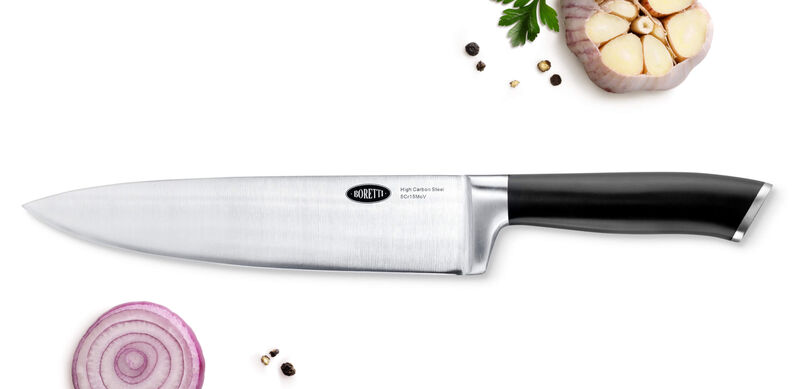
2. Paring Knife: The Detail-Oriented Cutter If you ever need to perform delicate and precise maneuvers in the kitchen, the paring knife is your trusty companion. It’s the smaller buddy of the chef’s knife, designed for tasks that require a gentle touch.
This little knife is perfect for peeling fruits and vegetables, as well as deveining shrimp. Its small size and nimble blade make it a go-to tool for creating intricate garnishes or removing blemishes from produce. Just like an artist needs a fine brush for intricate details, a cook needs a paring knife for those precise kitchen tasks.

3. Serrated Knife: The Tough Customer Tamer Have you ever faced a crusty loaf of bread that seemed impossible to slice without squishing it? That’s where the serrated knife comes to the rescue.
With its distinctive saw-like edge, this knife is designed to effortlessly glide through tough exteriors while preserving the tender insides of foods. It’s not just for bread, though – the serrated knife is also great for slicing through ripe tomatoes or delicate cakes. Think of it as the magic wand for conquering foods with challenging textures.
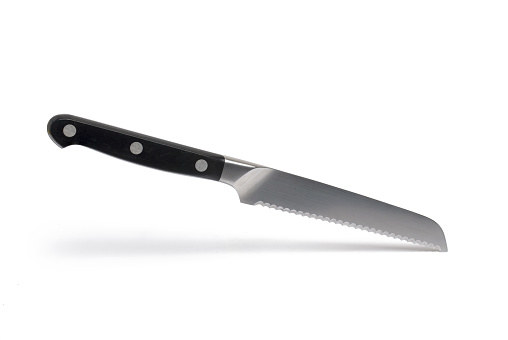
4. Utility Knife: The In-Between Expert Meet the utility knife, the versatile middle-ground option between the chef’s knife and the paring knife. It’s your go-to tool when a task requires more finesse and control than the chef’s knife but a bit more muscle than the paring knife.
This knife is perfect for trimming vegetables, slicing smaller cuts of meat, and handling various moderate tasks in the kitchen. Its adaptable nature makes it a dependable companion for a wide range of culinary adventures.

5. Bread Knife: The Crust Cruncher Have you ever tried slicing a crusty loaf of bread with a regular knife, only to end up with squashed slices? That’s where the bread knife steps in.
With its long, wavy edge, it’s specifically designed to slice through crusty bread without compromising the soft interior. Whether you’re making sandwiches or enjoying a hearty slice of artisanal bread, the bread knife ensures clean, even cuts every time.

6. Boning Knife: The Precision Pro When it comes to dealing with meat and bones, the boning knife is your expert companion. Its slim, sharp blade is tailor-made for intricate tasks like removing meat from bones or filleting fish.
This knife allows you to work with surgical precision, ensuring minimal waste and maximum yield from your cuts. Whether you’re preparing a succulent roast or delicately filleting a fish for dinner, the boning knife’s accuracy is unmatched.

7. Santoku Knife: The Asian All-Star All the way from the culinary traditions of Japan comes the santoku knife – a true kitchen superstar. Its name translates to “three virtues,” signifying its excellence in slicing, dicing, and chopping. With a wide, straight-edged blade and unique hollowed-out sections, the santoku knife minimizes friction and prevents food from sticking to the blade.
This makes it a versatile tool for a variety of kitchen tasks, whether you’re preparing stir-fries, slicing proteins, or crafting finely chopped herbs. Like a seasoned martial artist, the santoku knife’s every move is precise and purposeful.

2. Step 2: Kitchen Knife Anatomy
Blade: The Cutting Edge At the heart of every knife lies the blade, the star of the show. This is the part that does the actual cutting. Blades come in different shapes and sizes, each tailored to specific tasks. A longer blade, like that of a chef’s knife, is ideal for slicing and dicing, while a shorter blade, like that of a paring knife, excels at precision cuts.
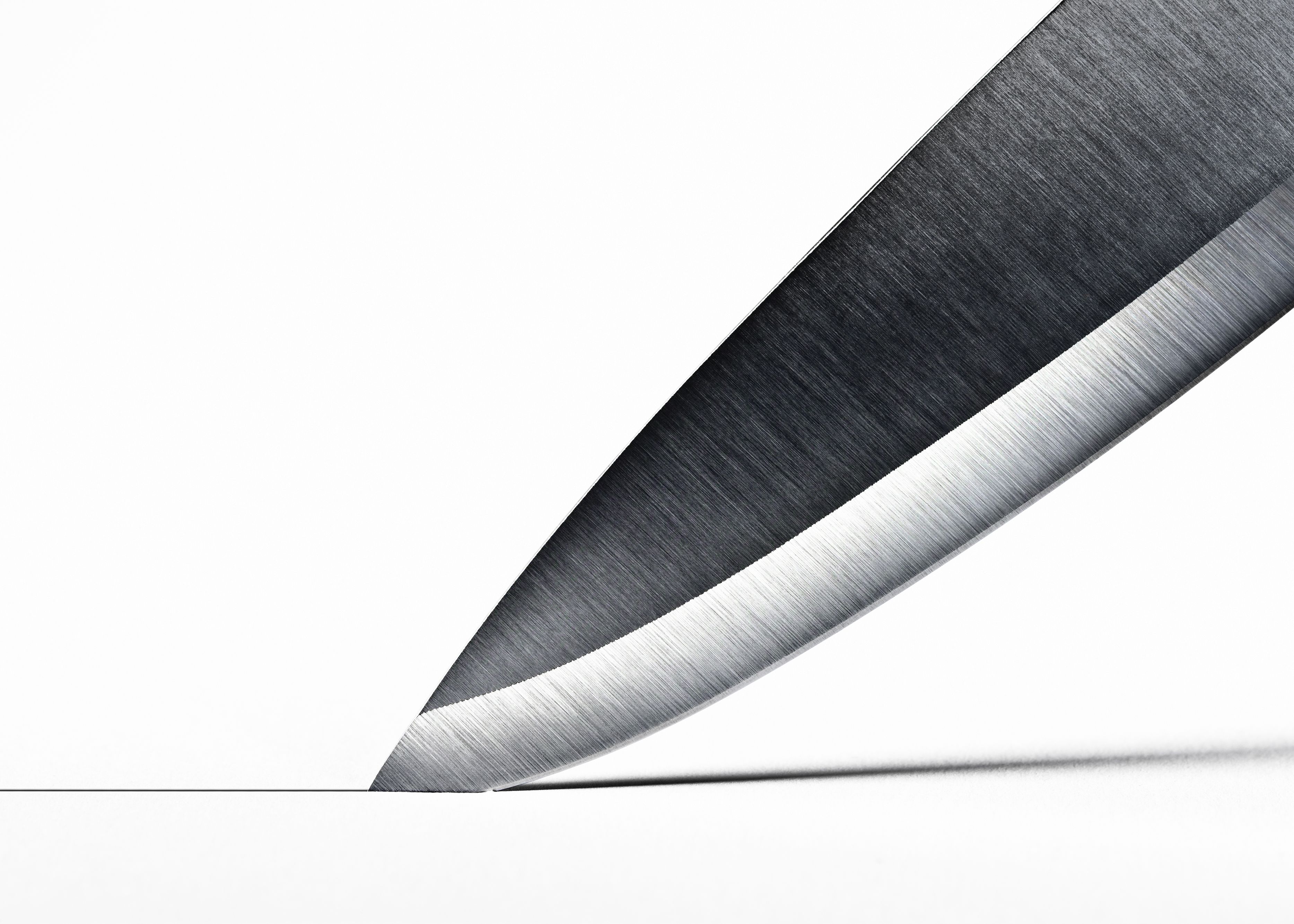
2. Handle: Your Grip Point The handle is your connection to the blade, your anchor as you wield the knife. It provides a comfortable grip, ensuring control and stability during cutting. Handles are made from various materials, such as wood, plastic, or metal. Choose a handle that feels comfortable in your hand and provides a secure grip, reducing the risk of accidents.

3. Tang: The Blade’s Backbone The tang is the extension of the blade that runs into the handle. A full tang extends the entire length of the handle, providing extra strength and balance to the knife.
Knives with full tangs are generally more durable and less prone to breaking. Partial tangs, on the other hand, are not as sturdy and are typically found in lower-quality knives.
4. Bolster: Guarding Your Fingers The bolster is the thick junction between the blade and the handle, acting as a guard to protect your fingers from sliding onto the blade while cutting.
Some knives have a bolster that extends down to the heel of the blade, providing added balance and stability. Others have a minimal bolster for increased agility.
5. Spine: The Opposite of the Edge The spine of the knife is the backside, opposite to the cutting edge. It’s usually thicker than the edge and provides stability during cutting.
The spine also determines the weight and balance of the knife. A thicker spine can provide more heft, while a thinner spine offers greater precision.
Understanding these components helps you make informed choices when selecting a knife that suits your cooking style and preferences.
A good knife is more than just a blade; it’s a well-crafted tool designed to enhance your culinary experiences. So, next time you hold a knife, take a moment to appreciate the harmony between its parts and the role each one plays in bringing your culinary creations to life.
3. Step 3: Matching Kitchen Knives to Tasks:
1.Slicing: The Maestro of the Chef’s Knife
In the grand symphony of the culinary world, the chef’s knife takes the lead as the virtuoso of slicing. With its commanding presence and elongated blade, it orchestrates a symphony of precision, turning ingredients into harmonious slices that promise both aesthetics and taste.
Whether you’re carving through succulent roasts or slicing vibrant produce, the chef’s knife’s long blade provides a canvas for culinary artistry. As your hand guides the blade, each stroke becomes a testament to your skill, and every slice is a culinary note in the masterpiece you’re creating.
:max_bytes(150000):strip_icc()/sea-mercer-slicerknife-taylor-murray-photo-02-79f38b1812284e7480dceee058e34bbd.jpg)
2. Dicing and Chopping: The Epic Tale of the Chef’s Knife
Imagine the kitchen as your stage, and the chef’s knife as the lead actor in the epic saga of dicing and chopping. With its versatile form and curved blade, this knife embarks on a culinary journey that weaves textures and flavors into a narrative of culinary greatness.
With each rhythmic cut, the chef’s knife transforms ingredients into bite-sized pieces of art. Every diced onion and chopped herb become an integral part of the story you’re telling through your dishes, showcasing your technique and culinary vision.

3. Precision Cutting: Paring Knife’s Delicate Sonata
When the canvas of your culinary creation requires delicate brushstrokes, the paring knife emerges as the artist’s tool of choice. This small yet nimble blade peels, trims, and carves with a finesse that matches the stroke of a painter’s brush.
With the paring knife in hand, you’re not just cutting – you’re sculpting intricate details onto your ingredients. From the gentle curve of an apple’s skin to the removal of seeds from peppers, each cut is a note of precision that contributes to the symphony of your dish.

4. Breads and Cakes: Serrated Knife’s Harmonious Overture
In the realm of textures that span from crusty to tender, the serrated knife takes on the role of a conductor, orchestrating a harmonious performance. Its serrated edge glides through breads, cakes, and delicate pastries, ensuring that each slice maintains the integrity of the texture.
The serrations of the blade are like musical notes, creating a rhythm that results in slices that are both visually stunning and satisfyingly textured. With the serrated knife as your partner, your creations resonate with a melody of flavors and aesthetics.
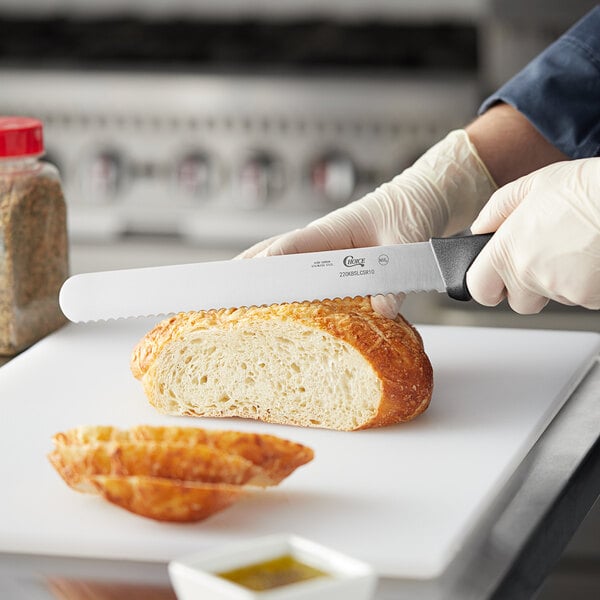
5. Meat and Bones: Boning Knife’s Precision Ballet
As the curtain rises on the theater of meat and bones, the boning knife takes the stage as the principal dancer in a ballet of precision. Its slender, flexible blade moves gracefully around bones, turning cuts into choreographed performances of expertise.
From filleting fish to deboning poultry, this knife’s movements are a testimony to your mastery over your ingredients. The boning knife’s precision ensures that your cuts are not only visually appealing but also maximize the yield from each piece of meat.

6. Delicate Greens and Herbs: Santoku Knife’s Refined Sonata
When the focus shifts to delicate greens and fragrant herbs, the santoku knife enters as a refined soloist, playing a melodious tune of precision.
Its broad, straight-edged blade moves like a pianist’s fingers, effortlessly slicing and chopping with an elegance that enhances the flavors of your dishes. With the santoku knife, you’re not just preparing ingredients – you’re composing a symphony of taste and aroma that resonates with every bite.
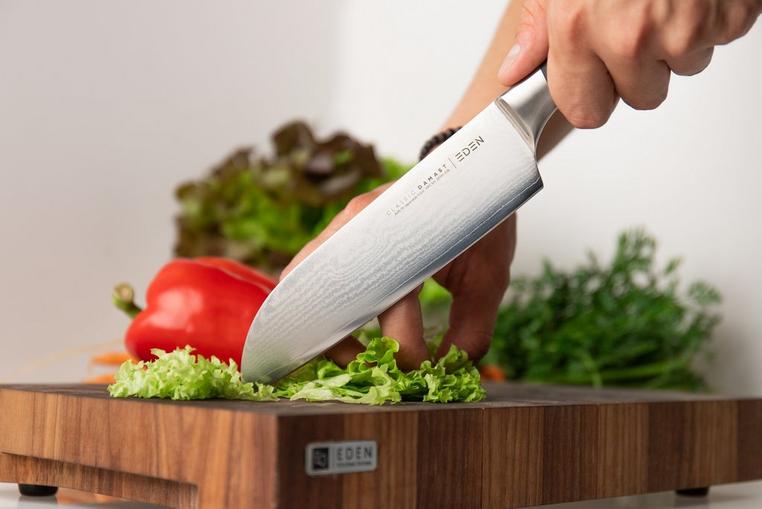
7. Utility Knife: Your Adaptable Collaborator
In the orchestra of culinary tasks, the utility knife takes on the role of a versatile collaborator, seamlessly adapting to the demands of various challenges.
From trimming vegetables to slicing modest cuts of meat, this knife’s presence ensures that every task is executed with precision and efficiency. The utility knife’s adaptability makes it an indispensable part of your culinary ensemble, supporting you as you navigate the diverse repertoire of kitchen tasks.

As you stand at the intersection of technique and creativity, remember that the art of matching knives to tasks is your gateway to culinary greatness.
With each cut, you’re not just cooking – you’re composing a masterpiece that speaks to your passion, skill, and dedication. The right knife in your hand is more than a tool – it’s an extension of your culinary artistry, transforming ingredients into edible works of excellence.
4. Step: Knife Care and Maintenance
1. Hand Washing: A Gentle Bath for Blades When it’s time to clean your knives, opt for the gentle embrace of hand washing. Use a mild detergent and warm water, carefully washing the blade and the handle. Avoid abrasive sponges or scouring pads that could scratch the blade’s surface. Remember to rinse thoroughly to remove any soap residue.

2. Immediate Drying: A Towel’s Warm Embrace After the bath, it’s crucial to dry your knives immediately. Water can lead to corrosion, which is the archenemy of sharpness. Use a clean, soft towel to gently pat the blade and handle dry. Pay extra attention to the handle area and the junction between the blade and the handle.
3. Storage Safely: A Sanctuary for Blades When your knives are not in use, provide them with a safe haven. A knife block, magnetic strip, or blade guards are excellent options for storage. These protect the blade from unnecessary contact that could dull the edge or cause accidents.
4. Honing: The Art of Maintenance To maintain the keen edge of your knife, regularly perform honing. A honing rod, also known as a sharpening steel, is used to straighten the blade’s edge between actual sharpening sessions. Hold the rod upright and run the blade along its length at a slight angle. A few gentle strokes on each side should suffice.
5. Professional Sharpening: A Necessary Tune-Up Even the best knives need professional attention occasionally. Professional sharpening restores the edge to its original sharpness, ensuring optimal performance. Depending on usage, aim for sharpening every six months to a year. A sharp knife not only makes your tasks easier but also enhances safety. Click Here To Read About The 5 Best Electric Knife Sharpeners.
Image: Professional Sharpening Service
6. Cutting Surfaces: Choose Wisely Your cutting surface matters more than you think. Opt for materials that are gentle on your knife’s edge, such as wood, plastic, or bamboo cutting boards. Avoid hard surfaces like glass or granite, as they can quickly dull your knife.
7. Proper Technique: The Key to Longevity Lastly, remember that the way you use your knife matters. Adopt proper cutting techniques to prevent unnecessary strain on the blade. Use a cutting board to protect both your knife and your countertop. Avoid using your knife as a can opener, screwdriver, or any other tool – its specialty is cutting.
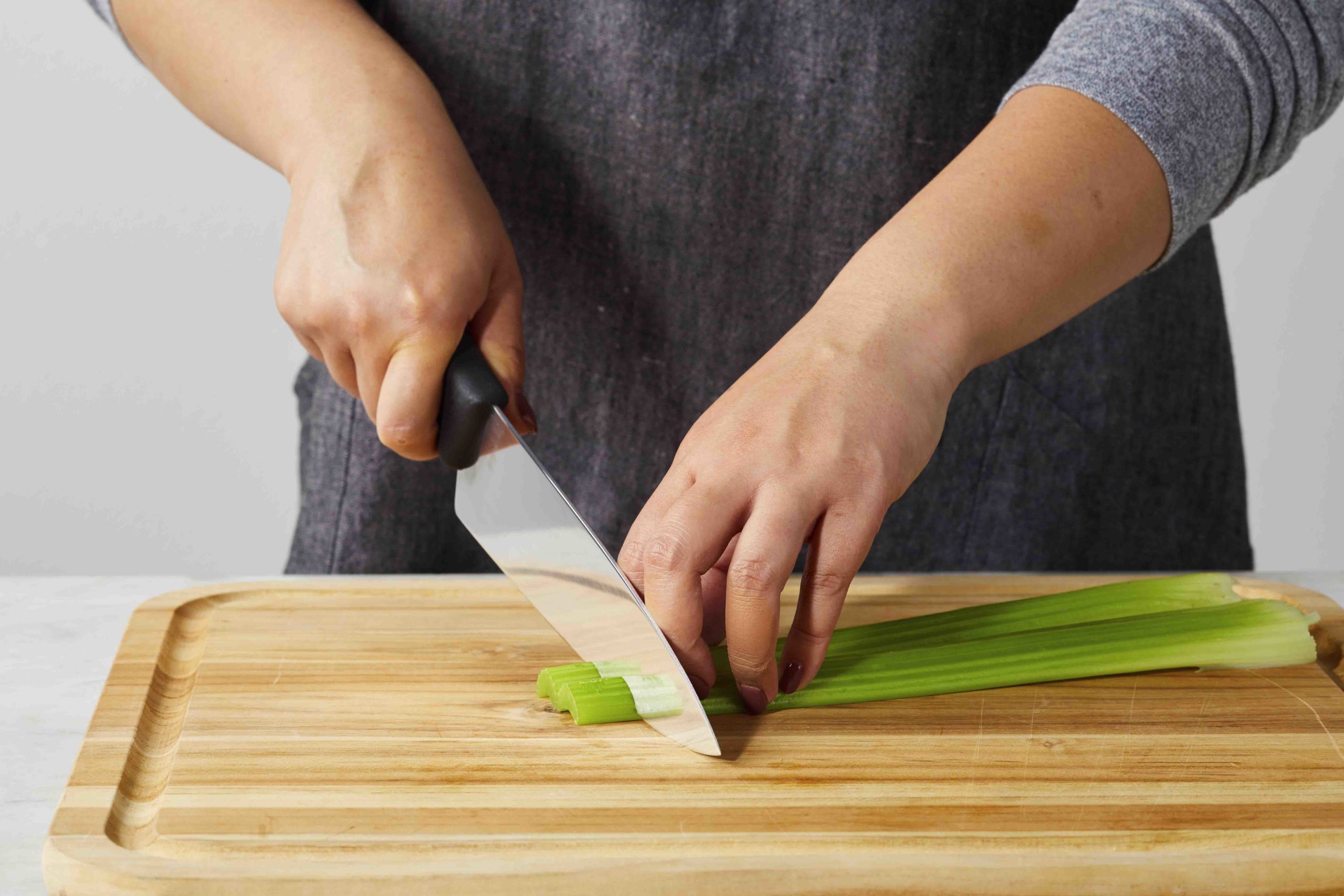
By incorporating these practices into your culinary routine, you’re not only prolonging the lifespan of your knives but also elevating your cooking experience. Just as a maestro tunes their instrument, a chef cares for their knives. With each slice, you’re not just cooking – you’re creating a masterpiece of flavor, technique, and care.
5. Step 5: Specialized Knives
1. Fillet Knife: Precision in Seafood Mastery The fillet knife is your trusted companion when working with fish. Its slender, flexible blade glides along the contours of fish, removing skin and bones with surgical precision. From delicate fillets to intricate deboning, this knife is the sculptor that transforms seafood into culinary sculptures.

2. Nakiri Knife: The Vegetable Virtuoso When vegetables take center stage, the nakiri knife steps into the limelight. With its straight blade and squared-off tip, it’s designed for swift, precise vegetable chopping. From intricate julienne cuts to elegant vegetable plating, the nakiri knife is the conductor that orchestrates a symphony of vibrant colors and textures.

3. Cleaver: A Might in Precision In the world of hearty ingredients and tough cuts, the cleaver emerges as the powerhouse of precision. Its hefty blade chops through bones, tough cuts, and dense vegetables with remarkable ease. This knife is your partner when crafting dishes that demand bold flavors and robust textures.
4. Sushi Knife: Crafting Culinary Artistry When sushi is on the menu, the sushi knife is your tool of choice. With its long, narrow blade, it cuts through sushi rolls with finesse, creating uniform pieces that showcase the delicate balance of flavors within. This knife is the brush that paints each sushi piece with precision and beauty.

5. Oyster Knife: The Pearl Extractor For the culinary delight of oysters, the oyster knife takes on the role of the pearl extractor. Its short, sturdy blade slips between oyster shells, gently prying them open to reveal the delectable treasure within. With the oyster knife in hand, you embark on a journey of exquisite flavors and tactile pleasures.

6. Tomato Knife: Taming the Juicy Giant Tomatoes can be both a delight and a challenge to slice. The tomato knife comes to your aid with its serrated edge designed to cut through tough tomato skins without crushing the juicy flesh. From caprese salads to savory sauces, this knife ensures your tomato-based creations shine.
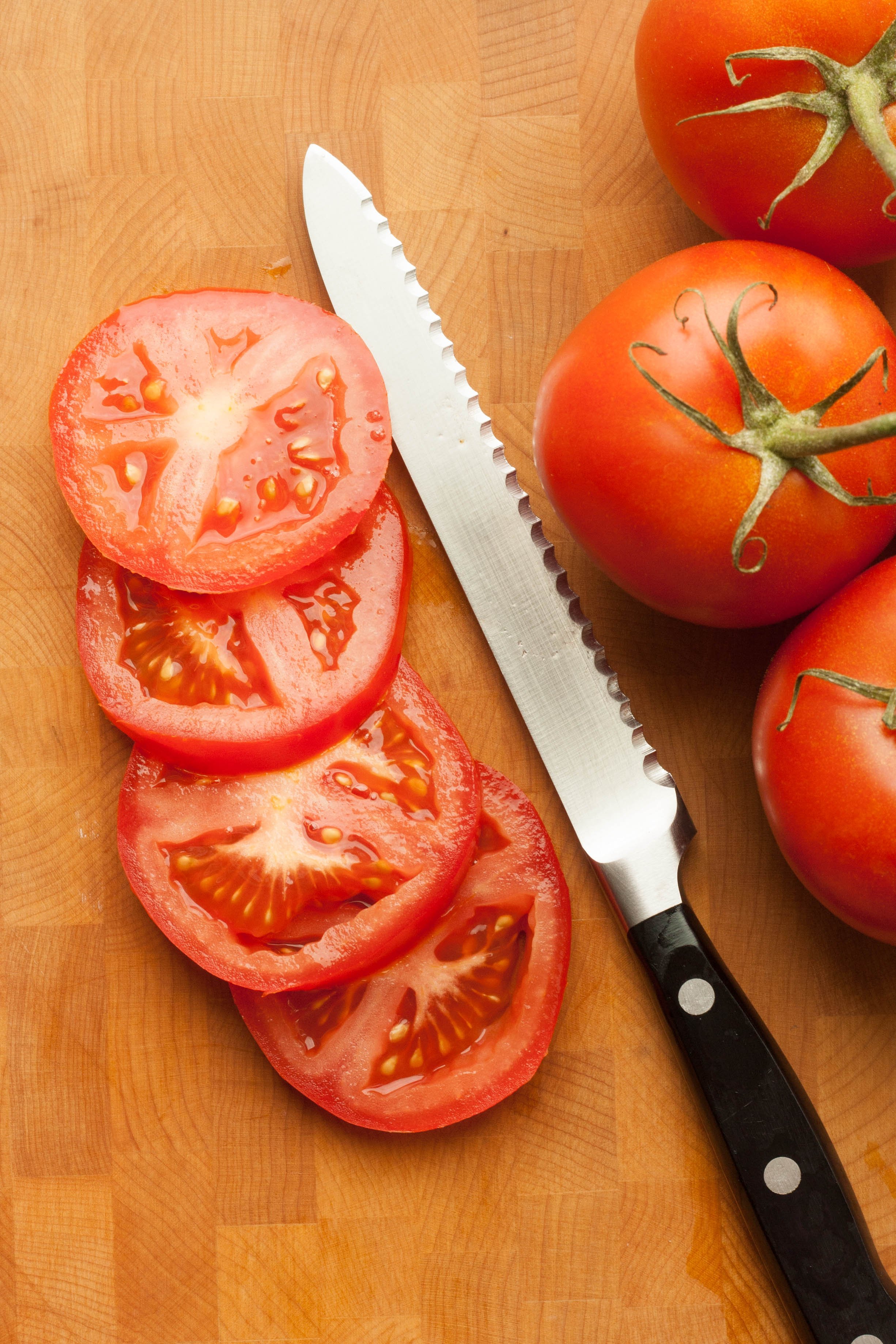
7. Cheese Knife: Master of Cheese Presentation When cheese graces your platter, the cheese knife is your companion in presentation. With its unique blade designs – such as pronged, fork-tipped, or wire blades – it slices through different types of cheese without sticking or crumbling. This knife ensures that your cheese platter is a work of art that tantalizes both the eyes and taste buds.
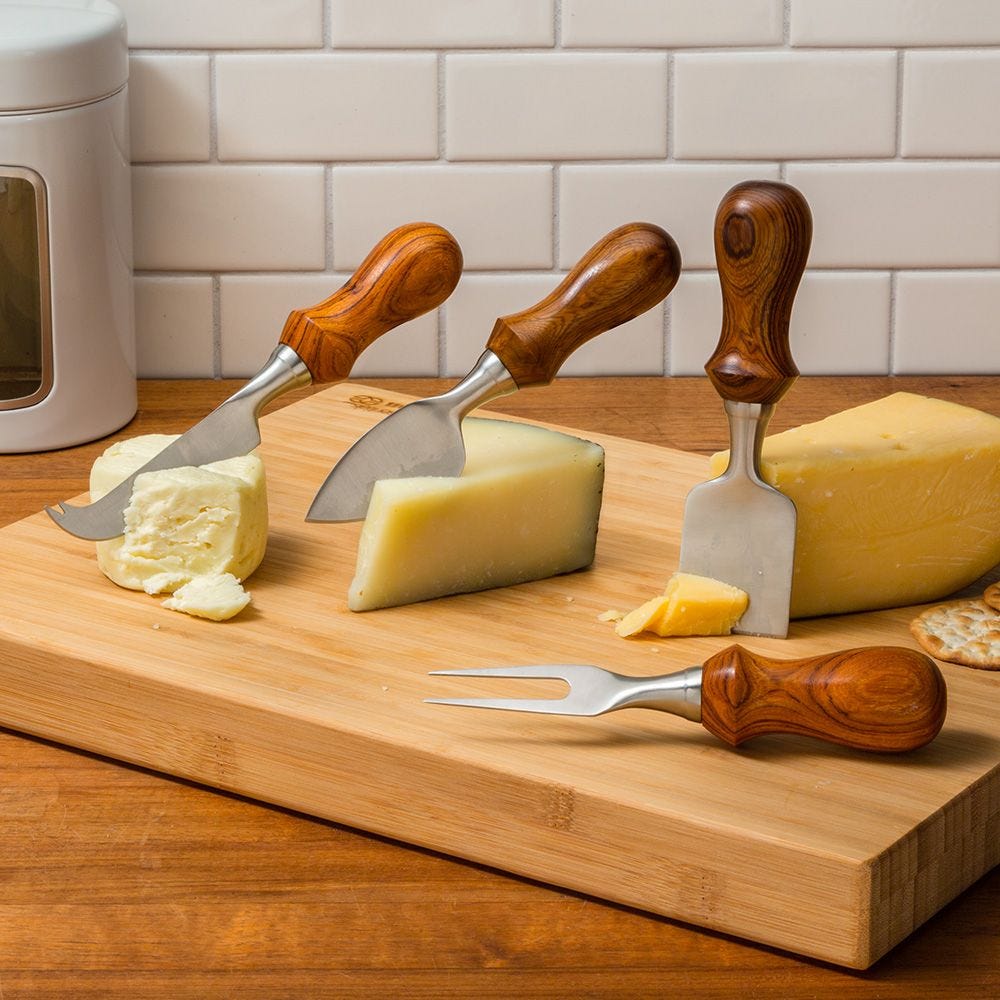
Embrace the world of specialized knives as your artistic palette, allowing you to create culinary masterpieces that reflect your expertise and creativity. Just as each brushstroke contributes to a larger picture, each cut and slice with these specialized knives brings your culinary vision to life. With these tools at your disposal, you’re not just cooking – you’re crafting gourmet artistry that leaves a lasting impression.
Step 6: Knife Safety
1. Proper Grip: The Foundation of Control When wielding a knife, a proper grip is paramount. Hold the handle firmly with your dominant hand, while your non-dominant hand guides the ingredient you’re cutting. This grip offers stability and control, reducing the risk of slips and mishaps. Click Here To Read How to Use A Kitchen Knife
:max_bytes(150000):strip_icc()/__opt__aboutcom__coeus__resources__content_migration__serious_eats__seriouseats.com__images__20100527-KS-How20to20hold20a20knife20-203-1e7513f1d9124f5c848147140ec3e1fd.jpg)
2. Focus and Awareness: Minimize Distractions When using knives, focus and awareness are your allies. Minimize distractions and maintain a clear workspace. A momentary loss of focus can lead to accidents. By staying present in the task at hand, you ensure both efficiency and safety.
3. Cutting Away from the Body: The Golden Rule One of the cardinal rules of knife safety is to cut away from your body. This technique prevents accidents in case the knife slips. Always position the ingredient in a way that your hand and body are out of the knife’s path.
4. Sturdy Cutting Surface: Foundation of Stability Use a stable cutting surface to prevent slips and wobbles. A sturdy cutting board made from wood, plastic, or bamboo provides a reliable base for your cutting activities. Avoid slippery or unstable surfaces that could compromise your control over the knife.
5. Knife Storage: Out of Reach and Covered When not in use, store your knives safely. Opt for a knife block, magnetic strip, or blade guards to keep the blade protected and out of reach. This prevents accidental contact and ensures that your knives are in optimal condition when you need them.

6. Cleaning Up Carefully: Mindful Cleanup After your culinary masterpiece is complete, clean up with care. Avoid leaving knives in the sink where they could be hidden from view, leading to accidental cuts. Wash and dry them separately, ensuring that your knives remain visible and secure.
Conclusion:
As we conclude this journey through the world of kitchen knives, it’s clear that these tools are more than mere instruments – they are extensions of your culinary creativity. Just as a painter selects brushes with precision and care, a chef selects knives that resonate with each task’s demands. From the versatile prowess of the chef’s knife to the delicate finesse of the paring knife, you now possess the knowledge to wield these culinary companions with confidence.
The art of selecting the right knife for each task goes beyond functionality; it’s about elevating your cooking from routine to remarkable. With the right knife in hand, you’re not just chopping, slicing, or dicing – you’re crafting flavors, textures, and presentations that tell a story of your passion and expertise. Your culinary creations become vibrant palettes of ingredients, each stroke of the blade adding to the masterpiece you’re creating.
Remember the importance of knife care and safety, for these practices are the guardian angels of your culinary journey. Just as a symphony requires every note to be in harmony, a successful cooking experience relies on every slice being executed with precision and caution.
So, as you venture into your kitchen, embrace the artistry of the knife. Let its blade be your brush, and every cut a stroke that adds depth and dimension to your dishes. From the gentle caress of a paring knife to the confident strides of a chef’s knife, each movement contributes to the symphony of flavors you’re composing.
May your culinary journey be marked by passion, skill, and a dash of creativity – qualities that the right knife can amplify. With these newfound insights, you’re ready to embark on a culinary adventure that transforms the ordinary into the extraordinary, one cut at a time.
Happy cooking!
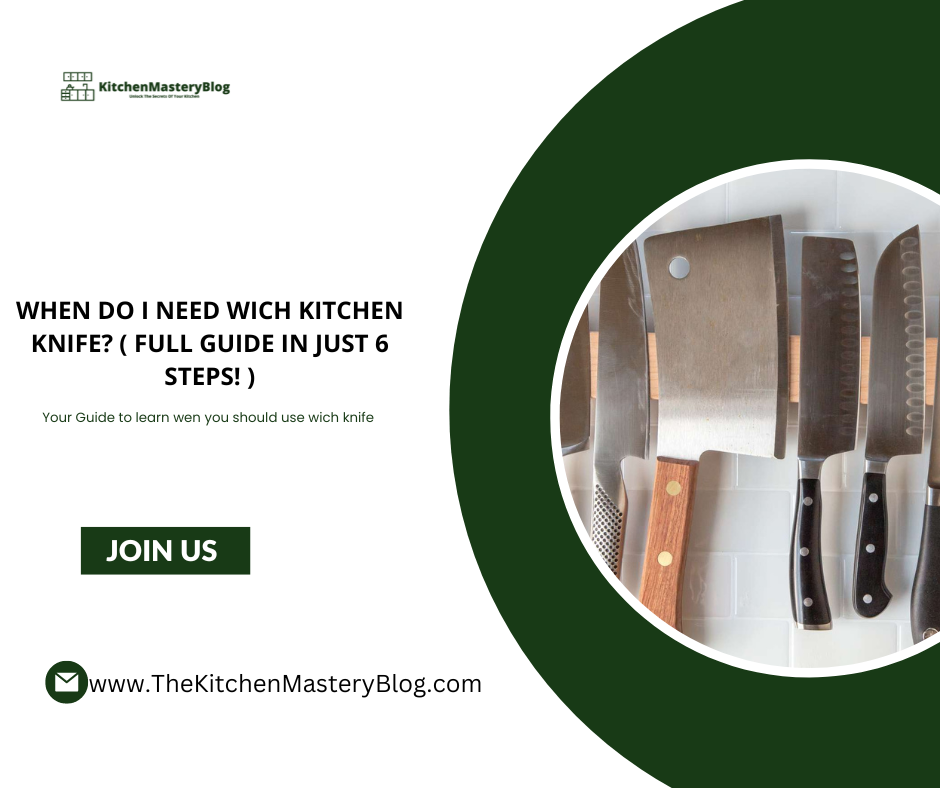
Pingback: How to maintain a Kitchen Knife in 2023 - Full Guide For Beginners In 7 Steps - kitchenmasteryblog.com